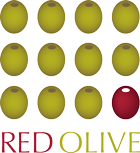We’re currently running a series of blog postings on what to really focus on to get the most business value when your resources are limited. The postings are based on a presentation given to leaders in small to medium sized companies. This is the fourth in the series.

The reason we like RED is that it is unashamedly designed to handle data warehouses very well. It isn’t an ETL tool and so there are some things that you would use an ETL tool do that you can’t do with RED. For example, if you want to carry out a data migration for an ERP project then you’re better off with an ETL tool. But if you want to develop data warehouses that your business people are going to love using then RED is for you.
The founding of the company came from frustration at working on data warehouse projects that took forever to deliver. If projects take a long time to deliver, by the time they go live the underlying requirements have moved on and so the business is disappointed. So RED as a tool is designed to:
1) Enable dimensional modelling. For example, it understands the concept of slowly changing dimensions and it’s very easy to point to a data source and tell it you want to make a slowly changing dimension from the data that’s there. RED automatically creates the SQL needed to create the dimension.
2) Support Agile. The concept of wanting to get some results back to a business person quickly to refine them is exactly what it’s designed to support.
3) Support change as the norm. In RED you work at the data model level and it then creates SQL and stored procedures as needed. If you change the business data model because of changing business needs, the underlying SQL is automatically updated. The mantra is “fail fast, fail often” to keep the cost of your project down while producing something that your business ultimately needs and will use.
In the next posting we’ll finish off looking at RED as a managed environment including a real example of a fairly complex data flow.




